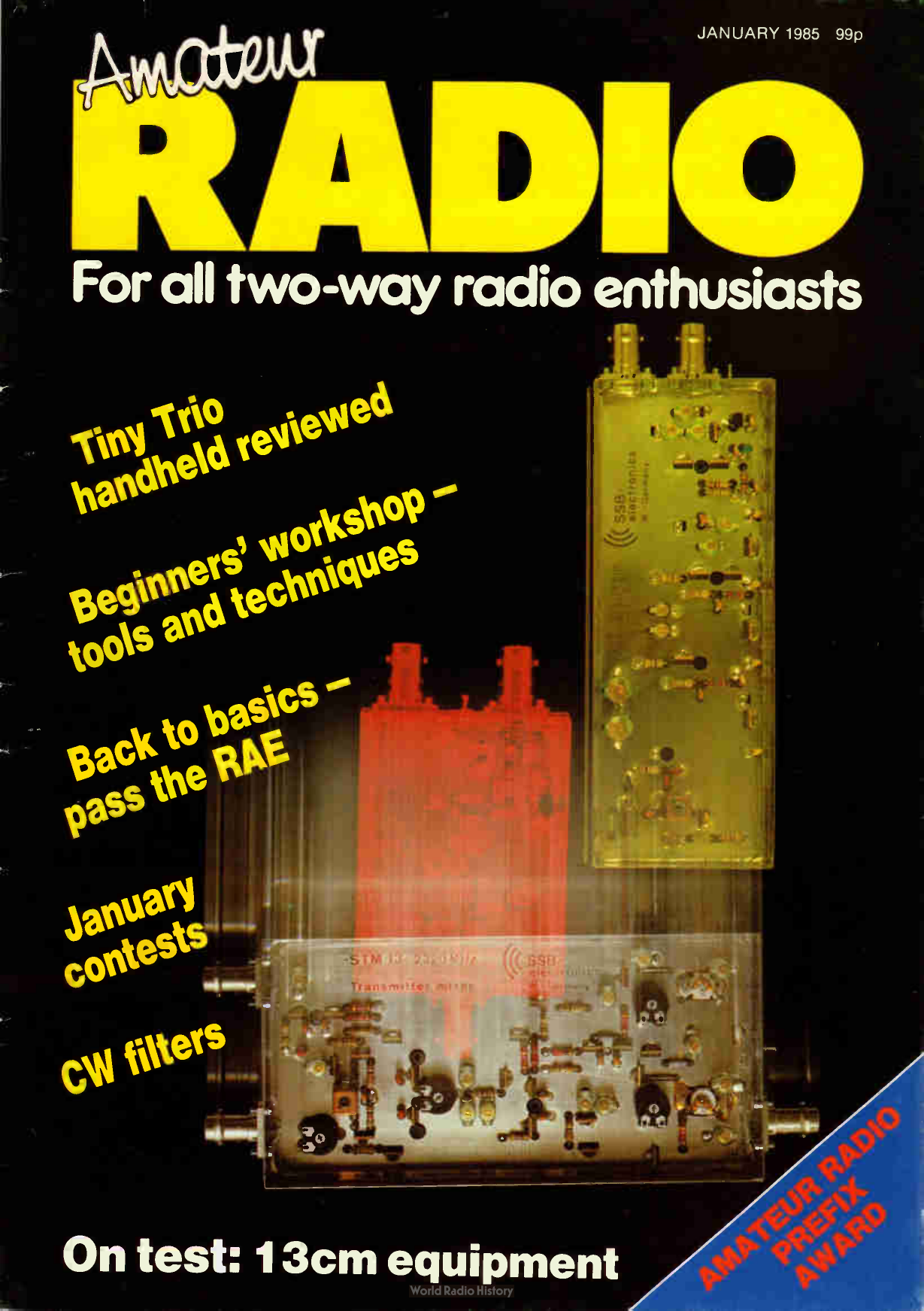ℹ️ Document Conversion Notice:
This page was converted from the original file for easier reading. Diagrams/images may appear only in the original PDF below.

File info: application/pdf · 68 pages · 4.20MB
Amateur Radio Magazine - January 1985
Discover the Latest in Amateur Radio
The January 1985 issue of Amateur Radio magazine brings you a comprehensive look at the world of two-way radio communication. This edition is packed with essential information for enthusiasts, from seasoned operators to those just starting out.
Inside, you'll find:
- In-depth reviews of cutting-edge amateur radio equipment, including the latest transceivers and receivers from leading brands like Trio, Yaesu, and ICOM.
- Practical guides for beginners, covering essential skills like soldering and setting up your first radio station.
- Detailed coverage of upcoming contests and how to participate, including the CQ Worldwide 160m Contest and the French REF Contests.
- Technical articles exploring new technologies and equipment, such as 13cm band operations and vintage radio restorations.
- News and updates from the amateur radio community, including club activities and important regulatory changes.
Whether you're interested in DXing, contesting, building your own equipment, or simply staying informed about the hobby, this issue offers valuable insights and resources.
Explore the exciting world of amateur radio with expert advice and community news.